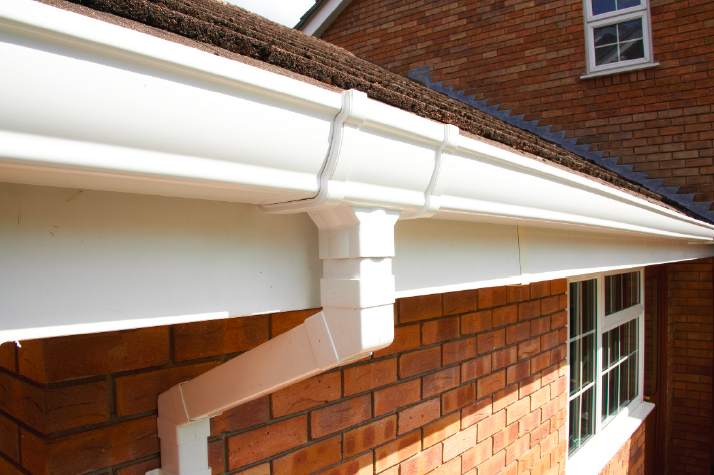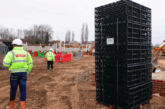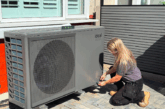
Steve Skeldon, Above Ground Product Manager at Wavin, discusses why guttering plays a crucial role in preparing new homes for a rainier future.
We may have just emerged from one of the hottest summers on record, but it comes hand in hand with more rain. The Met Office’s most recent State of the Climate report revealed that rainfall between October and March in recent years has been 16% higher than the average. Climate change is making our weather more extreme at both ends of the scale, and it’s a trend that will only intensify in years to come.
Housebuilders and developers who are laying foundations now, need to anticipate how this pattern will continue to evolve to make sure future homes can stand up to a climate increasingly defined by extreme weather. Guttering is integral to how a property handles rainfall, so it can’t be an afterthought, and extreme weather means robust solutions are essential.
Handling it all
Everyone who has cleaned out a gutter in the winter knows it’s not just water that you’re dealing with. Stormy weather can blow leaves or other debris into gutters, leading to blockages that have the power to cause serious damage. A blocked gutter can cause rainwater to back up onto roofs and walls, increasing the risk of leaks or water damage that are both costly to repair. The right guttering system, designed to keep debris moving, can stop this problem at source and prevent homeowners from discovering the real meaning of a rainy-day fund.
While extreme rainfall is where good guttering really earns its keep, the arrival of longer dry spells in the summer also puts pressure on systems. High temperatures can cause them to expand, potentially compromising seals and clips used to hold them together. When its dry, this isn’t a problem, but droughts are often bookended by episodes of heavy rainfall and flash floods, and this is when we see leaks and other issues because of a guttering system that’s had too much sun. When specifying a drainage system, it’s worth looking for one that allows for maximum movement with changes in temperature. This means it should have a robust mechanism for coping with expansion and contraction, such as wide seals or clear markings on the fittings to aid installation.
Meeting the demand
Manufacturers are feeling the impact of more extreme weather in the requests we’re receiving from customers – developers are looking for more powerful guttering systems, and the sector is responding to meet that demand. There are several factors to consider when specifying guttering for a new home or development, including location, roof pitch and area, and rainfall levels, but as a rule we should expect more rain everywhere.
For residential and commercial properties alike, high-capacity systems are becoming the norm, and innovative product design and engineering are making systems, such as Wavin’s Osma StormLine and Osma DeepLine, more sophisticated as a result. StormLine has been designed with a higher front edge, upping its capacity, but also preventing overshooting rainwater and overflow in stormy conditions. Internal ribs also help the flow through of leaves and debris to prevent blockages. The whole of the Osma rainwater range features a hydrodynamic outlet, which can handle up. to 30% more rainwater than other competitive systems.
Manufacturers are also now designing guttering not just for rainy days, but for the whole year. Wide retained seals enable the gutter to expand and contract with temperature changes, preventing damage or displacement from the fitting and maintaining performance in extreme heat.
Improved performance shouldn’t come at the cost of aesthetics, and this is a key consideration for housebuilders who want to deliver kerb appeal. Systems such as Wavin Osma use concealed sockets to hide roughly cut downpipe ends and help installers maintain a clean aesthetic. The range of colours on offer is also expanding, as non-white fascias and softfits become more common on new builds and consumers’ appetite for variety increases – our Osma systems are available in up to five different colours.
Ready for anything
Extreme weather is here to stay, but it shouldn’t slow the pace of the housebuilding that the government and the construction industry are working to deliver. It does, however, mean everyone must think ahead on current and future projects as these homes will be faced with serious challenges from rainier winters and hotter summers.
Guttering is unlikely to be top of the list of considerations for new buyers, but a home that’s dry and not at risk of damp or leaks will be, and a robust and effective guttering system makes a significant difference here. Manufacturers are responding to demands from the climate and the industry with robust solutions, and that’s helping developers deliver homes that will stand up to the test of time. In a future-proof home, future-proof guttering is a no-brainer.
For more information on Osma rainwater drainage systems, please visit www.rdr.link/dbg035








